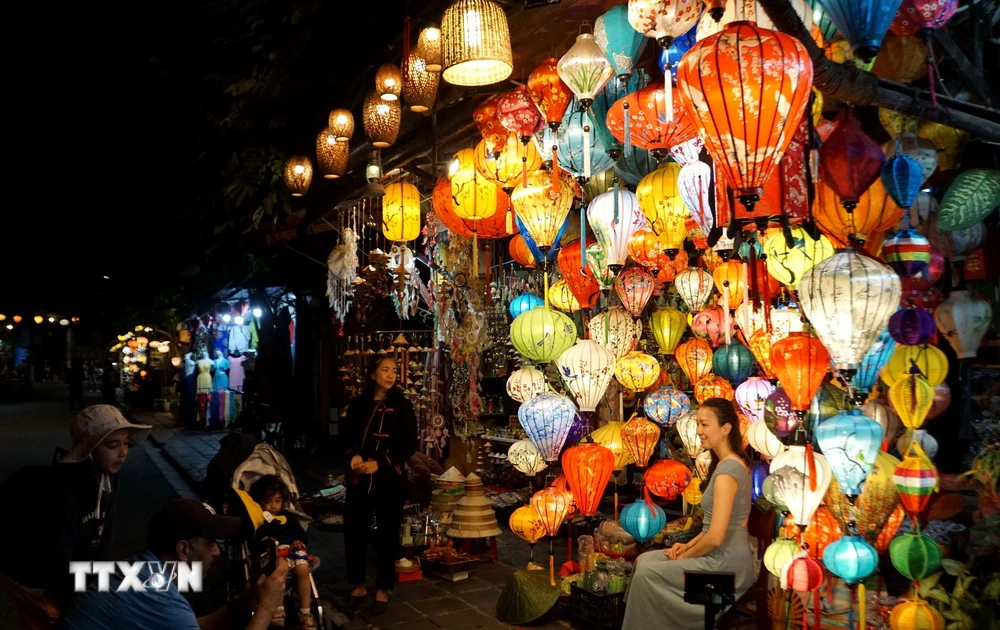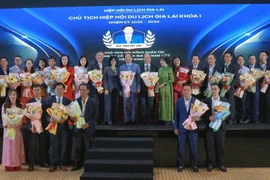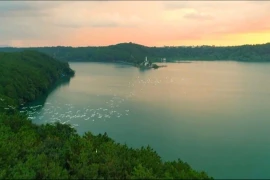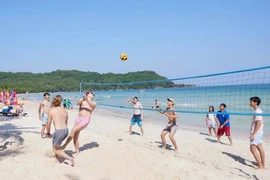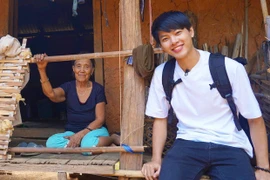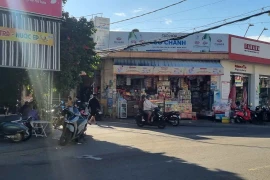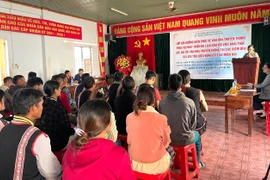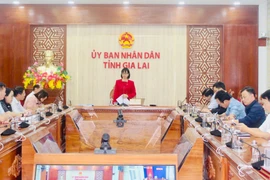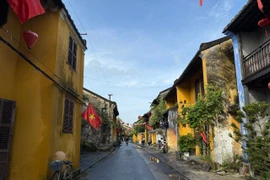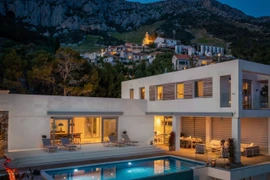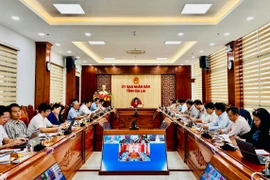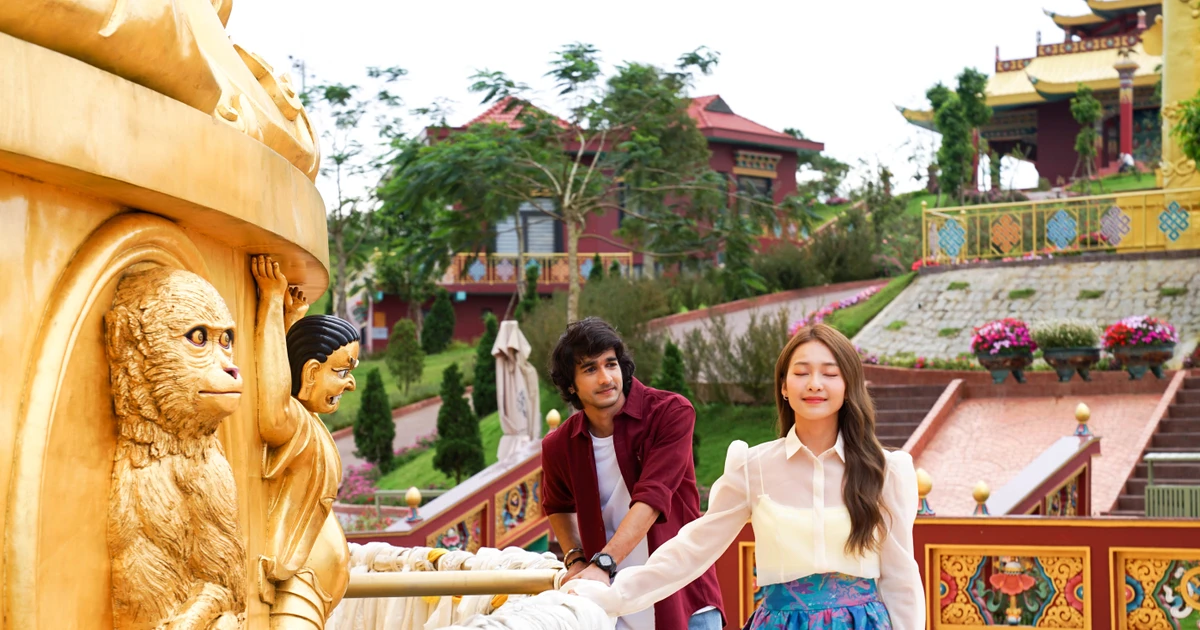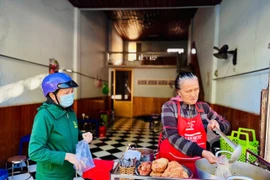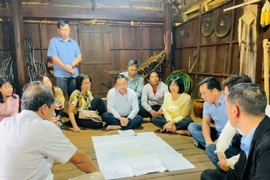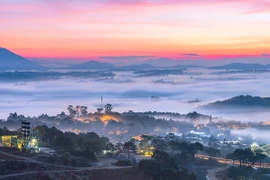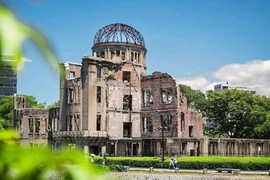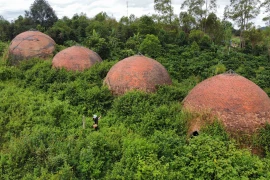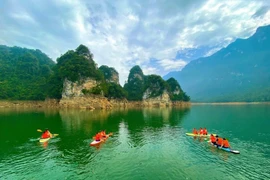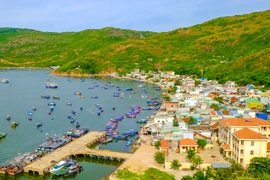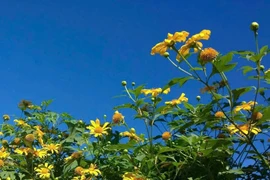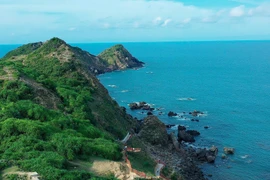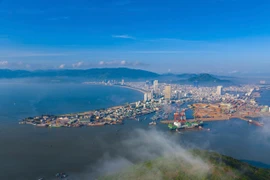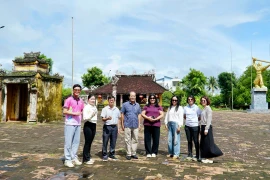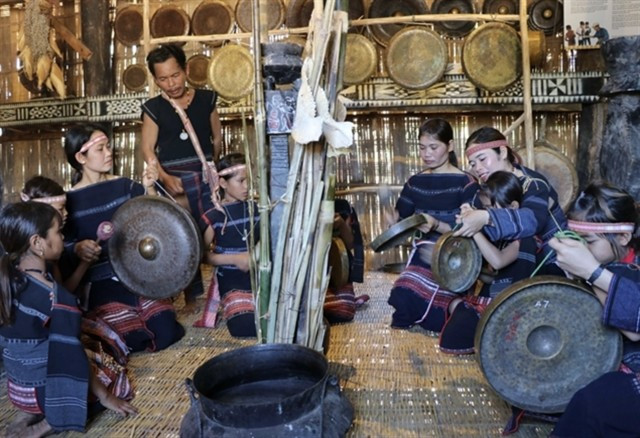
Classes on playing gongs are organised as a way to educate young generations about heritage preservation. Photo Hồng Điệp/VNA/VNS
The Gia Lai Tourism Association recently held a seminar themed “Honouring ethnic minority cultures–accompanying tourism development”, attended by representatives from the Việt Nam National Authority of Tourism and travel firms from both within and outside the province.
The event offered an opportunity for Gia Lai’s tourism sector to review its potential, assess current challenges, and identify solutions to integrate cultural preservation with tourism development – a key factor for ensuring sustainable growth across the Central Highlands region.
Many travel enterprises highlighted that eco-tourism, trekking and community-based tourism are increasingly popular among both domestic and international travellers. With its mild climate, pristine landscapes and rich cultural heritage, western Gia Lai holds great promise as a focal point in the tourism chain connecting the central and Central Highlands regions.
Tô Minh Thắng, director of the Việt Thắng Tourism Co. Ltd., said: “Gia Lai has all the ingredients to develop cultural and nature-based tours. However, the province needs clearer mechanisms and stronger support policies to unlock the full potential of community tourism”.
Most current tourism sites in Gia Lai mainly focus on sightseeing, delegates noted, with limited signature products. They recommended developing hands-on experiences such as cooking and selling local produce, participating in gong performances and communal house activities, or enjoying traditional herbal baths.
Such activities not only encourage longer visitor stays but also create livelihoods and entrepreneurial opportunities for ethnic youth, strengthening their attachment to their homeland.
Trần Thị Lan Phương, director of Heritage Tours, expressed hope that “one day, when returning to the Central Highlands, I can sit in a well-equipped theatre where artisans perform with dignity. A professionally produced show would help visitors gain a deeper understanding of the region’s culture.”
Connecting culture through famtrip
Before the seminar, the Việt Nam National Authority of Tourism organised a famtrip titled “Honouring ethnic minority cultures – accompanying tourism development”, gathering numerous travel firms and local officials.
The group surveyed key destinations in Quảng Ngãi and Gia Lai, including the A Biu and Kon Trang Long Loi community tourism villages, the Việt Nam–Laos–Cambodia border junction, the Stơr revolutionary village, the memorial temple of hero Núp, and the Kon Cha Răng Nature Reserve with its majestic K50 waterfall. Participants also visited popular attractions such as Biển Hồ (Sea Lake), Chư Đăng Ya volcano, Pleiku Museum and the Great Solidarity Square.
Experts said that beyond its stunning scenery, the Central Highlands boasts a treasure trove of intangible heritage from ethnic groups such as Bahnar, Jrai and Xê Đăng. With proper investment, these can form the foundation for distinctive tourism products with strong competitiveness.
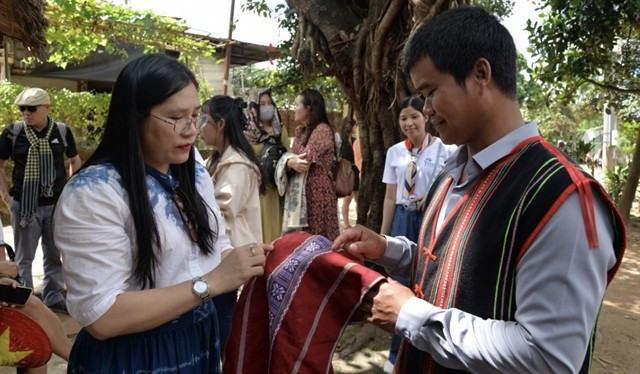
Traditional brocade products of the Central Highlands always attract visitors. Photo: vov2.vov.vn
Women preserve cultural vitality
In Gia Lai, ethnic minority women are playing a vital role in safeguarding and promoting traditional culture through community-based tourism models.
At Ia Mơ Nông Commune, the Kép Village community tourism club comprising 15 members, most of them traditional weavers – has revived cultural practices such as gong festivals, grave house ceremonies, net fishing and brocade weaving to serve visitors.
H’Uyên Niê, deputy chairwoman of the commune’s Women’s Union, said: “The model helps women earn a stable income while providing a space to pass weaving skills to younger generations. Each brocade piece is not only a tourism product but also a cultural story of our people.”
Gia Lai now has over 100 brocade-weaving clubs with more than 1,600 female members. These initiatives generate jobs while helping preserve the province’s intangible heritage.
Nguyễn Hữu Nguyên, Party Secretary of Chư Păh Commune, said: “We aim to develop tourism alongside high-tech agriculture and the preservation of traditional culture. Each festival and gong sound is a valuable asset that must be protected and promoted effectively.”
Sustaining culture in tourism development
According to Nguyễn Thị Kim Chung, deputy director of the provincial Department of Culture, Sports and Tourism: “The newly expanded area following the merger of Gia Lai and Bình Định offers favourable conditions to develop eco-resort, marine–forest and community-based tourism with the distinct Central Highlands identity.”
The link between Quy Nhơn’s coastline and Gia Lai’s forests promises a unique “one journey – two ecosystems” experience, allowing visitors to explore diverse landscapes, climates and cultures in a single trip.
From the vast forests to the blue sea, from the communal houses to the echoing gongs, Gia Lai is asserting itself not only as a land of epic legends but also as a vibrant destination of living culture, green tourism and sustainable growth.
Honouring ethnic minority culture is not merely about preservation – it is about breathing life into tourism, turning every local resident into a storyteller of their homeland and making every traveller’s step in Gia Lai and the Central Highlands a journey back to cultural roots.





